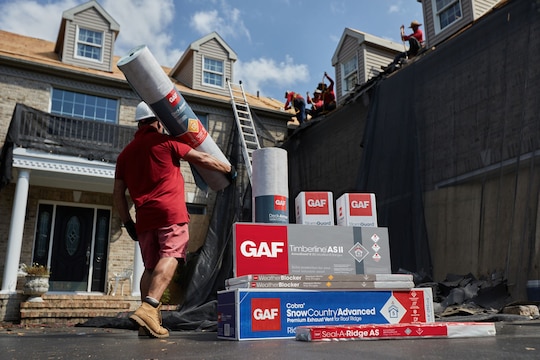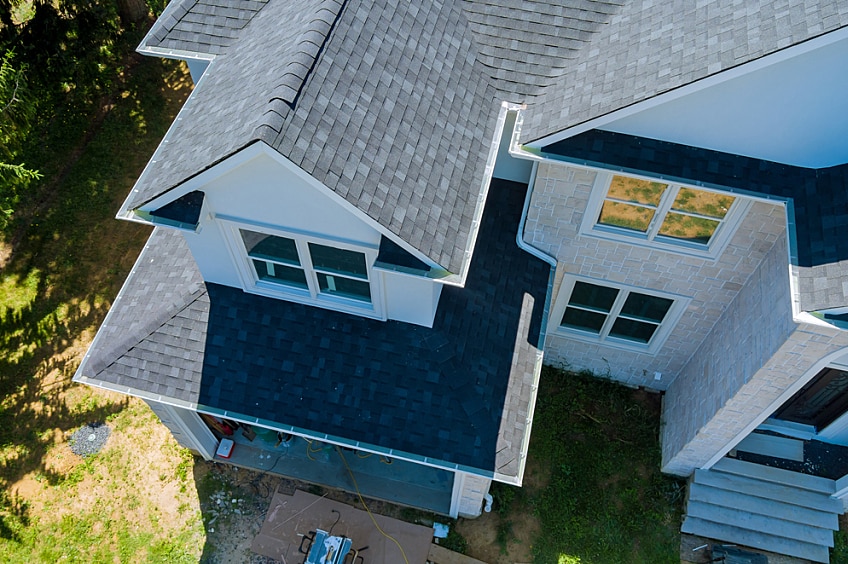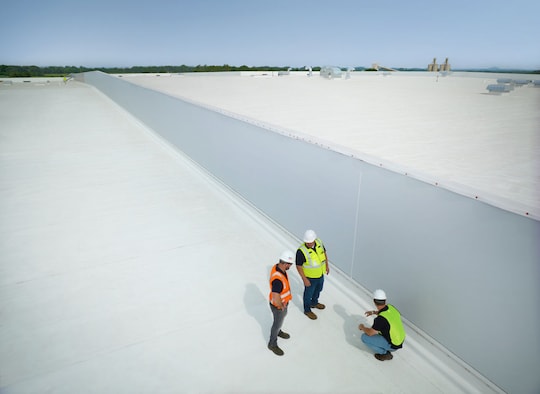
It's easy to think that there are as many roof types as there are buildings. In truth, there are only a few standard kinds and variations are made by combinations of these. The type of roof you select for your home or addition will influence a lot of other factors, including overall cost, what materials you can use, and how much of the roof is visible from the street.
With this in mind, here are the six main roof types. Each of these basic classes of roof system can be mixed and matched to create a unique look based on the style you prefer.
1. Gable
Gable roofs — the most common roof type — have a single peak and two sloped sides, with the ends forming an "A" shape when seen side-on. Gable roofs tend to be popular because the sloped sides shed water and snow very well.
A gable roof is easy to install, more affordable than most, and provides the space needed for adequate attic ventilation. Because its sloped sides prevent water-pooling and accumulation, this roof type is well-suited to wet climates.
When selecting a material for a gable roof, keep in mind that each of the two large sloped roof faces presents a lot of roofing material to the viewer. That means that, depending on your home's orientation, quite a bit of your roof may be visible from the street. If this is the case, you'll want to make sure you select the material and color that best complement your home's décor and style. Gable roofs can work with most roofing materials, including asphalt shingles and shakes.
2. Hip
Hip roofs are second in popularity to gable roofs. A hip roof has slopes on four sides, making it resemble a pyramid if used on a square building.
Hip roofs are structurally sound and can carry heavier loads compared with other roof styles. They are often used in areas where heavy snow is a concern. However, because they need to be engineered, these roofs are more expensive to build. They also leave less room in the attic for ventilation, which can affect your roof's performance.
Most hip roofs don't show much from the street view. However, if your roof has a steep, more visible slope, make sure that the roofing material matches your home's aesthetic. Most roofing materials are suitable for hip roofs.
3. Gambrel
A gambrel roof is a traditional barn roof. It has slopes on two sides; each side has a lower-sloped section on top and a steeper section on the bottom.
Gambrels provide great protection due to their steep slopes, which also allow for more attic space. Their construction requires fewer beams and columns than other roofs, which reduces the materials needed and installation cost.
Gambrel roofs feature a great deal of visible roof surface, so choosing an appropriate shingle and color that go with your home is key. You can use a variety of roofing material types on a gambrel roof.
4. Mansard
Mansard roofs are similar to gambrels, but they have slopes on all four sides. Each side includes two sloped sections, with the steeper section on the bottom. These roofs often feature dormer windows on the lower sections. Dormers provide added light to the upper floors and the attic, increasing your home's available living space.
It can be easier to construct additions to a building with a mansard roof, since the upper section is almost vertical. As with gambrel roofs, they provide excellent weather protection due to their steep slopes.
A large portion of a mansard roof will be visible from the street, so choose your roofing style and colors carefully to ensure that they fit the rest of your home's design. Mansard roofs work well with most roofing material types.
5. Shed
While a shed or lean-to type roof isn't that common, they are beginning to gain popularity within modern home design. This roof only has one slope or face, and there's no point or apex. Many modern homes use this stark shape of roof as part of a geometric style.
Depending on the orientation of the slope and the steepness, aesthetics might not matter as much, since not much of the roof may be visible from the street. In this case, you can choose the best roofing materials based solely on how well they fit your climate.
6. Flat
Flat roofs are occasionally seen on residential buildings, but they're more common in commercial and industrial construction. These roofs usually use a membrane roofing system, as opposed to the asphalt shingles found on most homes.
Even a flat roof has some slope to allow water to drain. However, having such a low slope means that flat roofs are often vulnerable to leaks and standing water.
As the surface of a flat roof can't be seen from the ground, the roof color and style likely don't matter much from an aesthetic viewpoint. Many buildings feature a white roof to reflect sunlight and heat during the summer months. Membrane roofing systems come in a variety of materials, including PVC, TPO, and modified bitumen.
Choosing a roof type for your home or addition hinges on the shape of your home's floor plan, the climate, and your roof ventilation requirements. It pays to consult with an architect or engineer before deciding what roof type to use — you can contact your local GAF certified contractor* for professional recommendations to meet your needs.
*Contractors enrolled in GAF certification programs are not employees or agents of GAF, and GAF does not control or otherwise supervise these independent businesses. Contractors may receive benefits, such as loyalty rewards points and discounts on marketing tools from GAF for participating in the program and offering GAF enhanced warranties, which require the use of a minimum amount of GAF products.



